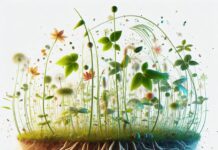Quick Guide to Aloe Saponaria

The Aloe Saponaria, which is also called the African Aloe, Zebra Aloe, Soap Aloe, gets its name because the sap from its leaves feels soapy when mixed with water. It is said that the sap can be used as a soap substitute.
The plant is endemic to the Southern parts of Africa and works well in places where the temperature does not go below freezing. It is a popular choice in cactus and rock gardens because its rich foliage and dramatic shape show well in such a setting.
Seaside gardens also sometimes incorporate this plant because the Aloe Saponaria is very tolerant of salty water. If you choose to grow this plant in a container, you can use it in varied settings as it is a great accent plant.
The plant grows to about 12 inches in height and has spotted leaves that grow in clumps and are shaped like rosettes. The Aloe Saponaria has striking reddish-orange or light yellow flowers in a tubular shape that bloom in spring, summer, fall, and early winter.
Each of the flowers tends to be 2-3 inches long. The plant is interesting in appearance both because of its flowers and its mottled leaves. Many landscapers use this plant for ground cover in gardens where there are palms and large cacti.
It keeps the theme going in rock gardens also. The plants need to be spaced about 15 to 18 inches apart from neighboring plants. The Aloe Saponaria is known to attract butterflies, birds, and bees.
The plant needs plenty of sun exposure. It is recommended that the plant is grown in a location with partial shade. Plants that are placed in light shade tend to do very well and are said to appear healthier, succulent, and display a greater depth of color.
Well-drained soil is good for the Aloe Saponaria and if you are growing it in a container the recommended mix is two parts of loam, one part peat moss, and one part of perlite or coarse sand. You can also add some gravel to ensure good drainage.
Use a Fertilizer Once During the Flowering Period
When the plant is in bloom it is advisable to use fertilizer once during the flowering period. The plant is very drought tolerant and even during its flowering season, you need to water the plant only when the soil starts drying out.
In fact, an outdoor plant may need only the watering of seasonal rainfall. During the dormant period, in winter, you need to water only enough to keep the Aloe Saponaria from shriveling. Keeping the plant in a cool, not cold, environment is said to help with new flower development for the next spring season.
In terms of pH properties of the soil, it is known to do well in soil that is mildly acidic, mildly alkaline, or neutral. The plant hardiness zone according to the USDA rating is 8b to 11
Aloe Saponaria or from Seeds
You can grow fresh plants from offshoots of another Aloe Saponaria or seeds. Once the plant is established it takes very little upkeep or maintenance. You need to remove the dead flowers periodically.
The plant spines can be spiky and so it can be hard to weed around this plant. It is also a quick-growing plant and be aware that it can spread more than you want it to and so you have to thin the growth out once in a while.
Also, it is important to know that the Aloe Saponaria is distinct from the Aloe vera and that the sap of Saponaria can actually irritate the skin, unlike Aloe vera which is used to soothe irritated skin.














